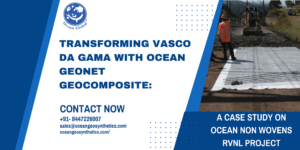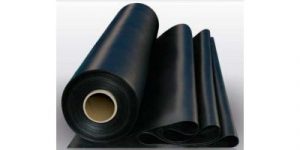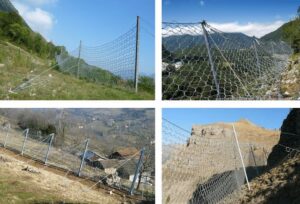HDPE Geomembrane-Reservoir Dam projects at Telangana 62825 sq mtr
 Seepage control and Leakage prevention of Reservoir Dams has always been a critical point of discussion. The use of HDPE (High Density Polyethylene) Geomembrane, which has the lowest permeability, has made it really easy and highly cost-effective to bring in the new technologies and control the migration of waste and other minerals and impurities into the water owing to the increasing urbanization and pollution.
Seepage control and Leakage prevention of Reservoir Dams has always been a critical point of discussion. The use of HDPE (High Density Polyethylene) Geomembrane, which has the lowest permeability, has made it really easy and highly cost-effective to bring in the new technologies and control the migration of waste and other minerals and impurities into the water owing to the increasing urbanization and pollution.
In this case study we have discussed the use of HDPE Geomembrane as a water barrier and an effective waterproofing or lining solution for the Reservoir Dam project in Telangana.
Product: HDPE Geomembrane 62825 sq mtr
Location: Telangana Reservoir Dam
Problems
Reservoir dams have changed the relationship between land and water by changing the natural ecosystem and utilizing it for betterment of civilization.
There are many problems caused by the existing dams in India and most of the effort is put into repairing the ones that pose a great threat to the society as a whole.
The most important challenges posed by the Dams are, Soil erosion, health hazards due to spread of disease, water pollution, endangering species such as fish, groundwater pollution etc.
Most of the time, the dams are not built in tandem with the changing erratic hydrological patterns.
The Reservoir dam in Telangana faced similar issues and called for a new system in place of the traditional mechanism. The most common issues were water seepage and leakage of various impurities brought in by the by-products of industrial wastes, hazardous minerals, etc.
The major implications on the dam safety were brought in by the severe floods and extremely stronger storms. Climate change surely has its impacts on the safety of the neighboring areas of the Dam as well. And therefore, the overall situation demanded more stringent actions in the form of stronger dams that had the best solution when it came to its permeability and strength.
Solutions
Geomembranes, and specifically the HDPE geomembranes, have been the best solution to reservoir dams and their seepage and leakage issues.
They are surely an innovative solution brought in a very environment friendly, and cost-effective manner.
HDPE geomembranes have the most outstanding hydraulic and mechanical properties, making them highly effective solutions for reservoir dams, as the one in Telangana.
Their key property lies in the fact that they control the permeation of any impurities in the water through the membrane.
The HDPE geomembranes have successfully provided the dam with the much needed safety causing the dam to be more environment friendly and free from any seepage or leakage issues, since it is the most effective new age solution to waterproofing of the dams and groundwater saving, owing to their higher strength, lowest permeability, their chemical and weathering resistance properties, higher flexibility and most importantly, their longer durability.
They do come with the ability to separate the impurities from the water, provide filtration, and act as a hydraulic and gas barrier protecting the environment at the same time.
FAQs
What is the difference between smooth and textured geomembranes?
Smooth geomembranes have a smooth surface, while textured geomembranes have a textured or rough surface. The choice between the two depends on the required friction angle and interface shear strength.
Are geomembranes resistant to chemicals?
Geomembranes are designed to have excellent chemical resistance. However, the specific resistance depends on the material type and the chemicals involved. Compatibility tests should be performed for specific applications.
Can geomembranes be used in high-temperature applications?
Yes, some geomembranes are designed to withstand high temperatures. For example, certain types of PVC and EPDM geomembranes can handle temperatures up to 70°C (158°F) or higher.



